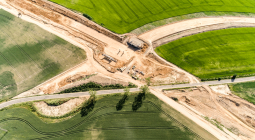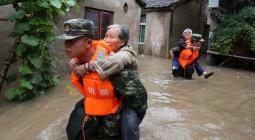Urban planners are key to tackling urban heat hot spots

New research sheds light on the impacts of design on the urban heat island effect in global cities. It also shows the role planners can play in cooling things down, says Dima Zogheib
This year we’ve seen record-breaking wildfires force thousands to evacuate from Rhodes, and cities across Italy put on red heat alert.
Climate change is making cities dangerously hot. We are on track for this year to be the hottest on record. And it is only going to get hotter.
Arup launched our Urban Heat Snapshot to get people talking about the important role of planning and design in tackling the urban heat island (UHI) effect – when temperatures in urban areas increase dramatically compared to their rural surroundings. In particular, we need to tackle ‘hot spots’ within cities – where one neighbourhood can experience major differences in temperature from the next.
Using AI to analyse satellite images, we mapped the most extreme hot spots in a 150km2 sample of the urban centres of a diverse range of cities: Cairo, London, Los Angeles, Madrid, Mumbai and New York. Our digital analytics tool (UHeat) allowed us to model the difference in air temperatures experienced from neighbourhood to neighbourhood on the hottest day in each city in 2022.
In the majority of cities, we found that the hottest spots had less than 6 per cent vegetation cover, while the coolest spots were found entirely in parks, away from residential and commercial areas. This contributed to massive temperature swings within cities, with Madrid’s built up downtown experiencing heat almost 8°C hotter than El Retiro Park a short distance away.
It’s clear that the way we’ve built and planned our cities has inadvertently created extreme hot spots
It’s clear that the way we’ve built and planned our cities has inadvertently created extreme hot spots. And as global temperatures rise, they are an increasing threat – urban heat can be lethal.
A recent study led by Barcelona Institute for Global Health estimated that extreme heat killed more than 61,000 people in Europe alone in 2022. It is increasingly understood that poorer neighbourhoods are also more at risk to heat exposure, due to factors such as a lack of trees and a lack of air conditioning. Infants, older adults and those with pre-existing health conditions are also highly vulnerable to the impact of heat.
Worryingly, three of the cities studied experienced their worst UHI hot spots during the evening or night-time. Urban heat is a particular problem at night, due to materials like cement absorbing heat in the day then slowly releasing it when the sun goes down. This causes stress and health issues – a study has suggested that by 2100, the risk of death from excessively hot nights could grow six-fold compared to 2016.
Within the survey area in Madrid, the city with the most extreme UHI hot spots, we found that 500,000 children and elderly people were living with evening UHI heat spikes of 7°C or more. In London’s urban centre, almost a quarter of a million elderly people and children saw heat spikes of 4°C compared to rural surroundings.
Until now, modelling urban heat has largely been the preserve of academia. Or undertaken crudely using satellite analysis of land surface temperatures, which can be skewed by the dramatic highs of heat-absorbing materials on roofs and roads. But the UHeat tool provides a tool for planners to test different interventions and to find the most effective solutions.
In particular, this is a huge help in advocating for nature-led solutions. Our snapshot highlights the huge extent to which grey infrastructure is dominating our cities – where green and blue spaces cut through, they are often carefully controlled and disconnected, without thought for their impact on biodiversity.
The good news for planners is that advanced digital tools are increasingly providing the evidence-base to understand the hot spots, the heat profile of our cities, what works, what to prioritise, and to develop the appropriate policies and design codes to address the challenge.





